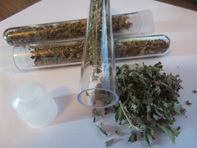Catnip4Cats.com Blog - Catnip4Cats.com
FOLLOW ME ON STEEMIT https://steemit.com/@todaysrant2017 #steem #steemit #blog #blogger #funny #art #animation #undertale #valentines #life #painting
Catnip / Nepeta catara Medicinal Uses
WE ALSO ACCEPT SECURE PAYPAL PAYMENTS BELOWJust Add to Cat your Desired Purchase and Payments will SECURELY be processed though Paypal Dried Extra Strong Catnip Organic Herb For Cats Various Sizes Nepeta Cataria Prices Start From £1.65 - £12.00 FREE UK P&P Does catnip work on humans? Catnip doesn't induce a high in humans like it can in cats. It tends to have a sedative effect, instead. As we mentioned above, some claim it induces a high similar to marijuana when smoked. Culinary uses for catnip: Catnip is most often drunk as a tea to calm an upset stomach or help with sleep. Catnip tea recipe:
Medicinal uses for catnip: Catnip is useful for settling an upset stomach. It has been used to treat headaches, scarlet fever, coughing, insomnia, and smallpox. It can also be used for cuts, studies show it has a natural healing quality. Crush fresh catnip leaves, damp them, and apply to your cut. Some other medicinal uses for catnip include anaesthetic, antibiotic, anti-rheumatic, antispasmodic, astringent, calmative, diuretic, muscular aches and pains, rheumatism, chills, cold in the joints, hemorrhoids, toothache. K’Eogh, in his General Irish Herbal (1735) wrote of catnip, “It provokes urination and menstruation: it expels the stillborn child; it opens obstructions of the lungs and the womb, and is good for internal bruises and shortness of breath. Drunk with salt and honey, it expels worms from the body.” According to The Herb Garden, "The root when chewed is said to make the most gentle person fierce and quarrelsome." In fact, there is a story about an executioner who would have to chew on the root of catnip so he could bring himself to kill. Pregnant women should avoid catnip, as it can induce uterine contractions. |

































